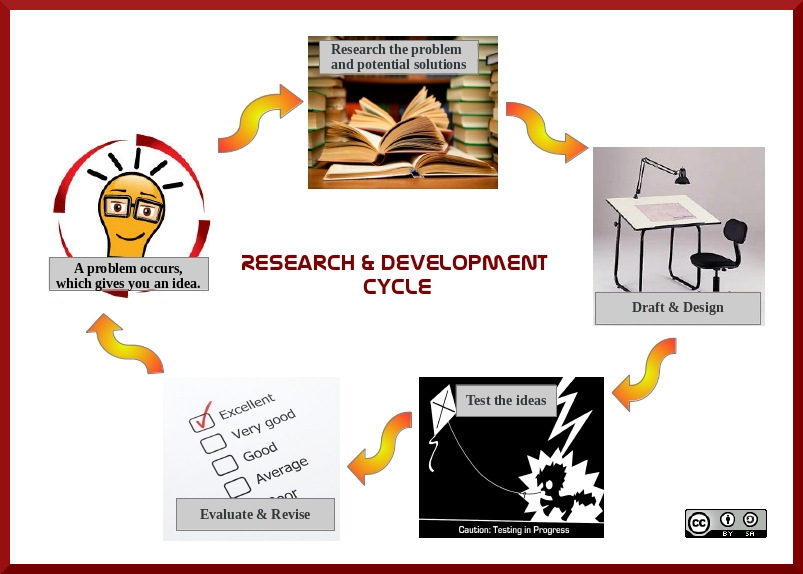So, you’ve had an idea in your head for a while, and you want to turn it out into a product. Do you know how to go about it? There is a certain process cleverly called “the R&D cycle” that walks you through the steps to get your idea from your brain and ready for use. This is approximately what it looks like:

So, let’s start at the beginning. The idea. Let’s say you’re going about your daily life, and you think, “This can be done better southafrica-ed.com.” This where you’re defining your problem. Let’s take the famous example of James Dyson and the vacuum (read his book Against the Odds for the full story). He was vacuuming his flat one day and noticed his old, refurbished Hoover not sucking up the bits and pieces well. After experimenting with various things, he noticed that the bag was the issue.
Figuring out the source of the problem is not always easy, such as in Dyson’s case, not always clean. You may have the idea and the problem pinpointed, but figuring out how to fix it takes research. Research, as you may have guessed by the infographic, usually takes a lot of reading and talking to experts. There is often a lot of note taking, some preliminary experimentation, and some revision on what the actual problem is as well as how to solve it. However, this isn’t the longest part of the cycle.
The longer part of the cycle is the next few steps, and they follow in sequence for best results. First you draft up your ideas and build a working prototype. Once you have it built, you test your prototype and evaluate it critically. By being analytical and critical of your prototype, you make it the best it can possibly be. Note down everything that happens, good and bad, and try to figure out how to make it as efficient as possible before you declare it “good enough for government work”. After all, we all know that government work is often shoddy now a days — keep your standards high, and the market will designate yours the best quality product to fix the problem.
The down side to this is all the money it takes. Going through the R&D cycle once you get past the initial prototype is not quick, easy, nor cheap. The best way to approach the analysis portion of the cycle is to take an Edisonian approach. There is a lot of trial and error, and if you are doing something higher tech, the cost goes up for materials, speciality shapes, and other such factors that you might need. It also takes time. Great ideas are not invented over night. It takes time to test, evaluate, retest, reevalutate your design, research more, and so on. The cycle seems endless, and it can get infuriating in many ways.
I apologise for not sugar coating it, but it’s the truth. Inventing something is not easy. It’s not cheap in any sense of the word, either. Leonardo da Vinci, for example, worked for years coming up with a new way to make plaster that worked with his way of doing art. It cost him years of time, which let down his employer, damaged his reputation for a time, and cost him a lot of money because he wasn’t being paid for a job that he wasn’t completing. It was much the same thing with Dyson, but for that tale of woe, I recommend you read the book.
In the end, though, inventing something is rewarding. It doesn’t matter if the invention is for you, someone else, or society at large. The point is that it’s your creativity that can bring about changes in your world and society. You will make it, and Insanitek will help make sure of it.

sometimes experimentation leads to other discoveries.
That it does. Some of the greatest discoveries, like rubber and Teflon, were discovered on accident.